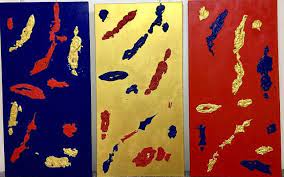Torah beckons us to go on a journey, not across time but across worlds in this very present moment. An extraordinary voyage that transforms us. View the study guide here. Watch the recording here.

In 1814 Sir Walter Scott published his novel Waverly. It was the first historical novel in modern literature and started an entire new genre. Authors such as Honore Balzac, Leo Tolstoy, Alexandre Dumas, Charles Dickens, and James Fenimore Cooper took us to places we had some knowledge about but into a time that was not our own.
Jules Verne disrupted this genre’s dominance by introducing a new literary model: the geographical novel. His novels took place in a present time but transported us to unfamiliar places. You have probably read some of these, which include: Journey to the Center of the Earth; From the Earth to the Moon; Twenty Thousand Leagues Under the Sea; Around the World in Eighty Days. Verne composed fifty-four geographical novels between 1863 and 1905 as a single enterprise called Les Voyages Extraordinaires.
Unlike historical novels, which transport us across time to a known place, Verne’s novels carry us to unfamiliar places in a present time. Even more than historical novels, Verne’s works stimulate our imagination, causing us to be on a journey with him and his characters. He takes us on a passage from reality to imagination and back.
How shall we read the narrative that is Torah? As one that transports us across time to a known geography? Or as a story that causes us to be in another world in the present?
In our cycle of Torah readings, we are embedded in the building of the Mishkan. The Mishkan project is both a structure and a communal enterprise designed to have us experience a world that is unlike the one of limitation that is all too familiar to us. It is a portal to the world of infinity.
Guiding the Israelites through that experience are the priests. This week’s reading, Parshat Tetzaveh, describes the garments to be worn by the High Priest. Included is a breastplate consisting of twelve distinct stones. Each one represents one of the twelve tribes. Although the High Priest is charged with serving as point in contacting and evoking the Infinite, his heart is covered by a symbol that turns his focus to this world. He travels from within the community, enters the Mishkan’s Holy of Holies and returns to his point of departure.
Joseph Zrihen is a French Israeli artist. Born in Morocco, he moved to France at age twelve. He is both a medical doctor and a painter. He describes himself as “one man with two passions; a doctor of the body and a painter of the soul.” Shown here is his triptych Les Voyages Extraordinaires. It is an homage to Verne’s work.
A triptych has the capacity to present a narrative: a beginning, a middle and an end. It also allows for examination of a subject from multiple perspectives that complement each other. The three separate elements are often constructed so that they can be folded on top of one another, creating a single piece.
Here, each of Zrihen’s panels includes biomorphic images, and each panel has a different background color. There is a journey across the panels. We start at one end; enter a realm in the middle; and arrive at a third. But the third panel’s color is not the same as the first’s. The journey from one realm to the next has generated a transformation.
Judaism has replaced the priest with Torah dressed in priestly garments. This is what now serves as our point in contacting and evoking the Infinite. It beckons us to go on a journey, not across time but across worlds in this present moment. It is an extraordinary voyage from which we return transformed.
Join us here at 7:00 p.m. (PT) Thursday March 2 as we explore a journey to beyond and back.








